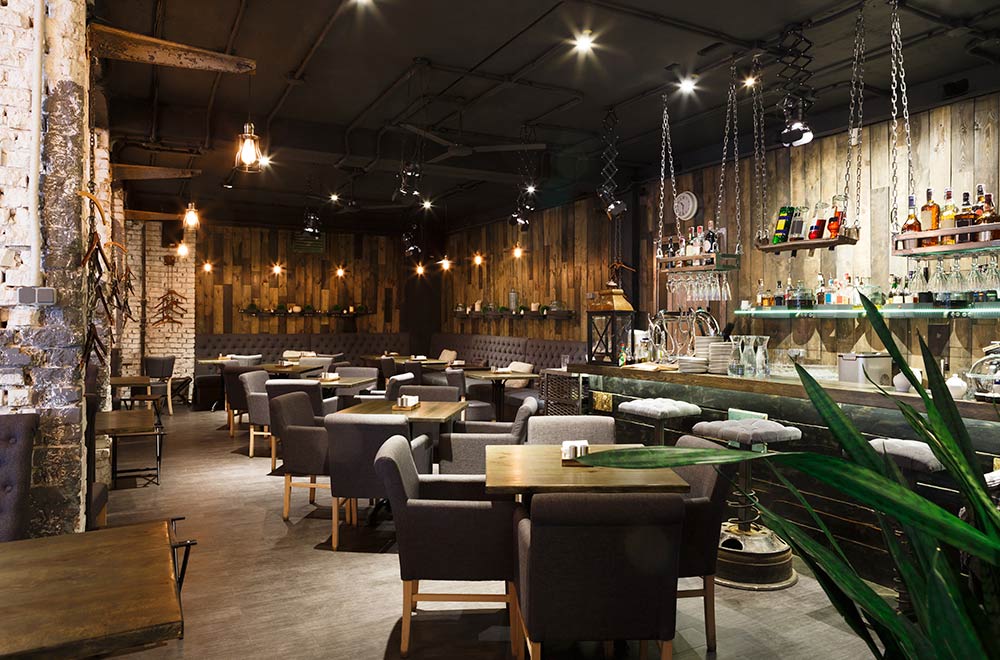Chinese Food Islamabad: Take Pleasure In Genuine Chinese Food at its Best
Savor Authentic Eastern Cuisine With a Pan-Asian Twist for a Cooking Experience
Embarking on a cooking trip through genuine Eastern food, improved with a Pan-Asian spin, uses a special possibility to check out the rich tapestry of flavors that specify the area's varied culinary traditions. As you consider these tempting recipes, take into consideration the cultural stories and historic impacts that shape them, each bite providing a tale waiting to be discovered. pan asian restaurant Islamabad.

Exploring Pan-Asian Flavors
In the world of global gastronomy, Pan-Asian food attracts attention for its amazing diversity and the unified interplay of flavors from numerous Oriental societies. This culinary method celebrates the unique components and rich customs discovered across the continent, developing a tapestry of tastes that is both intriguing and satisfying. Trick to Pan-Asian cuisine is its capability to balance contrasting flavors-- pleasant, salted, spicy, and sour-- while highlighting the quality and top quality of each ingredient.
From the umami-rich soy sauce of Japan to the intense chili peppers of Thailand, Pan-Asian food provides a considerable palette of flavors. These components are typically incorporated in inventive ways, enhancing meals with layers of intricacy. For instance, making use of aromatic natural herbs such as lemongrass and cilantro, common in Vietnamese and Thai cuisine, adds a refreshing illumination to recipes, while the consolidation of coconut milk supplies a creamy, abundant appearance.
The focus on fresh produce and fragrant flavors makes certain that each dish is not just a feast for the taste buds but additionally for the detects. Pan-Asian cuisine welcomes restaurants to start a cooking journey, checking out the huge and differed landscapes of Eastern gastronomy with every bite.
Combination Recipes to Attempt
While Pan-Asian food is commemorated for its standard flavors, the modern-day cooking landscape is progressively embracing blend recipes that mix these traditional components with influences from various other areas. This ingenious method not just honors the rich heritage of Oriental cooking arts however also introduces unique preference experiences that appeal to modern tastes.
An archetype of such a blend meal is the Korean-Mexican taco, where marinated bulgogi beef is covered in a warm tortilla, covered with kimchi and a spicy gochujang-infused salsa. This mix marries the bold, savory flavors of Korea with the vibrant, fresh aspects of Mexican cuisine. In a similar way, sushi burritos have gained appeal, joining together the fragile virtuosity of Japanese sushi with the hearty, hand-held comfort of a burrito, typically featuring combination active ingredients like tempura shrimp and avocado with a drizzle of wasabi mayo.
Another significant meal is Thai curry ramen, which instills the creamy, aromatic flavors of Thai curry into the calming broth of conventional Japanese ramen, producing an unified blend that tantalizes the detects. These blend meals expand beyond mere novelty; they represent a culinary discussion in between societies, encouraging expedition and advancement on the planet of Pan-Asian cuisine.
Vital Components and Spices
To truly appreciate Pan-Asian cuisine, one need to understand the necessary ingredients and spices that create its foundation. This diverse culinary design draws from a rich tapestry of Oriental customs, using an unified mix of flavors and structures. Trick ingredients include soy sauce, fish sauce, and oyster sauce, which impart a savory umami depth crucial to Eastern recipes. Corresponding to these are rice vinegar and mirin, offering a fragile level of acidity and sweetness.
Aromatic components are crucial, with ginger, lemongrass, and garlic being ubiquitous across various Pan-Asian dishes. These ingredients provide an aromatic base that improves the intricacy of tastes. Spices such as star anise, cardamom, and cinnamon introduce heat and character, resembling impacts from areas like China and India.

Cooking Methods and Tips
Understanding the art of Pan-Asian cuisine needs knowledge with its unique food preparation techniques, each adding to the vivid tapestry of flavors this cooking practice is commemorated for. Central to these techniques is the stir-fry, a fast cooking technique that maintains the nutritional stability and vivid colors of ingredients. Using a frying pan, the stir-fry approach allows for also heat distribution, crucial for achieving the particular structure and flavor equilibrium of Pan-Asian dishes.
Another basic strategy is steaming, particularly prevalent in Chinese food. This gentle approach keeps the all-natural tastes and nutrients of active ingredients, making it perfect for seafood and vegetables. Dumplings, a beloved staple, commonly profit from steaming, causing soft, delicious appearances.
Cooking, likewise essential, gives great smoky midsts to meals such as Oriental bulgogi or Japanese yakitori (Fine dining experience Islamabad). This strategy usually entails marinading components, enabling flavors to pass through deeply prior to cooking over an open flame or warmer
Finally, mastering the art of stabilizing flavors-- pleasant, sour, salted, bitter, and umami-- is vital. Correctly layering these elements can elevate a dish from normal to extraordinary, providing a complicated and satisfying cooking experience that symbolizes the significance of Pan-Asian cuisine.
Dining Experiences Worldwide
Throughout the world, Pan-Asian cuisine offers an unrivaled eating experience, commemorated for its rich tapestry of tastes and lively presentations. This cooking phenomenon has actually gone beyond cultural borders, catching the hearts and palates of food fanatics worldwide. In worldwide cities like New York, London, and Sydney, Pan-Asian dining establishments act as fusions where culinary practices from Thailand, Japan, China, and beyond merge, offering diners with a diverse mix of meals that highlight the area's diversity.
The worldwide charm of Pan-Asian food lies in its capability to offer both authenticity and technology. Cooks skillfully wed traditional components such as lemongrass, soy sauce, and miso with contemporary methods, leading to dishes that are both refreshingly new and familiar. This blend allows diners to embark on a culinary journey that respects heritage while embracing modernity.
Additionally, eating experiences dragon garden are raised with attentively made environments that mirror the principles of Pan-Asian aesthetics. From minimalist Japanese-inspired interiors to dynamic Thai-themed spaces, each restaurant offers an one-of-a-kind ambiance that enhances the cooking offerings. As a result, customers are not simply consuming a meal yet partaking in a social experience, making Pan-Asian restaurant dining a genuinely worldwide sensation.
Verdict
The expedition of Pan-Asian cuisine provides a profound understanding of the detailed interaction of tastes and cooking traditions across Asia. By embracing blend dishes such as Thai curry ramen and sushi burritos, the cooking journey not only highlights the adaptability of traditional active ingredients yet also showcases innovative modern-day methods. This gastronomic adventure, improved by essential spices and cooking approaches, offers an one-of-a-kind opportunity to value the multiculturalism and culinary virtuosity that specify Pan-Asian cuisine on a global range.
Getting started on a culinary trip through genuine Oriental cuisine, boosted with a Pan-Asian twist, supplies a special opportunity to explore the abundant tapestry of flavors that define the area's diverse cooking traditions.In the world of global gastronomy, Pan-Asian food stands out for its impressive variety and the harmonious interplay of tastes from various Asian societies. Key to Pan-Asian food is its ability to balance contrasting tastes-- sweet, salted, spicy, and sour-- while highlighting the quality and high quality of each component.
